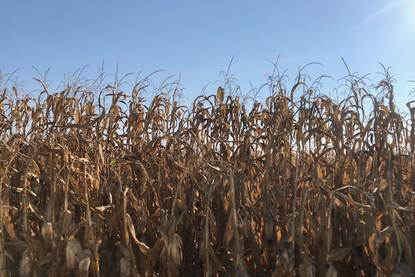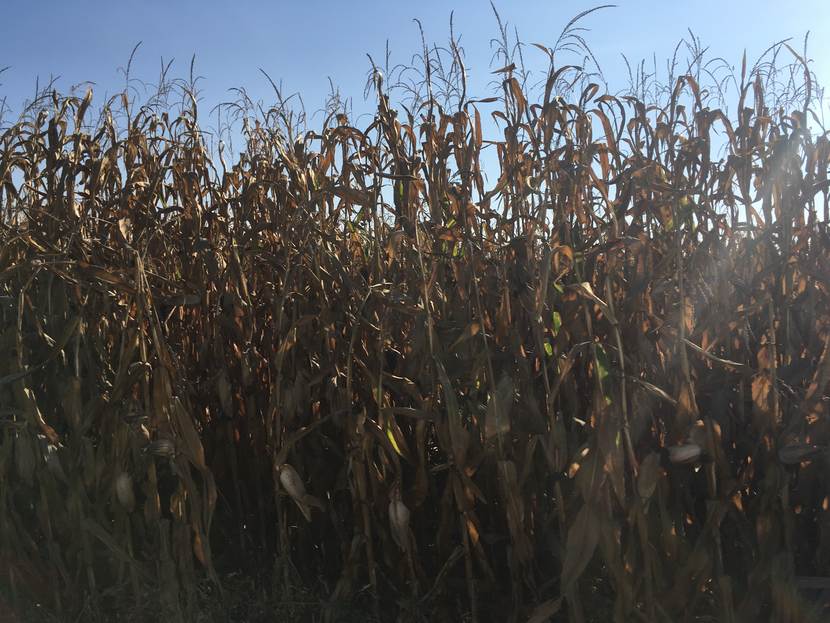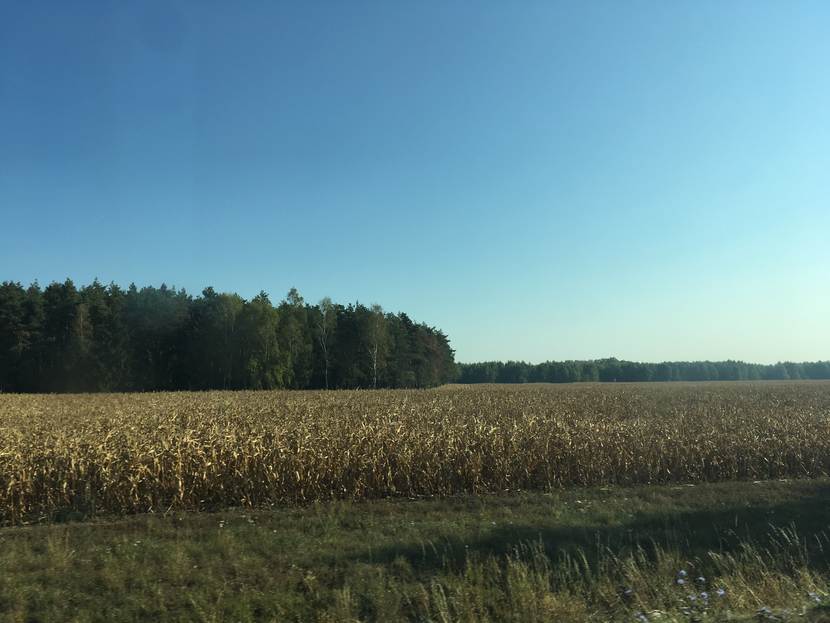Securing future harvests: the 2018 drought in Poland and a way forward
In recent years, extreme weather events such as droughts and floods have been appearing in Poland more and more often due to observed and predicted climate change.

These events become increasingly more intense and cover significant areas of the country causing damages in crops. According to a recent publication in Nature Scientific Journal, Europe shows an increasing trend towards soil moisture droughts in a long term perspective. In this light, poor natural conditions in Poland regarding soils (majority of sandy soils, poor quality, low levels of soil matter content, acidification) and low water resources provide a challenge for the future. The combination of the aforementioned factors (weather conditions, poor soils and low water resources) make farming in Poland especially challenging.
According to the European Drought Observatory, most of central and northern Europe this year is affected by the drought. This results in very dry soils, rivers, water reservoirs and low groundwater levels across Europe and has a devastating impact on yields (mainly cereals). The reduction in yields causes an increase in cereal prices, which means also more expensive feed, meat and dairy products.
In Poland, this year losses in Poland caused by drought exceed 3.6 billion PLN, more than 130 000 farms have been affected, and the total agriculture area where the drought occurred is estimated to approximately 3.5. M ha (data according to the Polish Ministry of Agriculture, September 5th ). The Polish Central Statistical Office (as of 30/07/2018) preliminary estimated a decrease in the harvest of basic cereals and cereal mix by 14%, in rape seed by 16 % and in field vegetables by 8 %. The drop in basic cereals and cereal mix is the largest since 2006. There is an expected increase in price of wheat by around 12 %, and of oilseed rape by 7.6 %, by the end of November 2018.
Smaller harvests of cereals and cereal mix reduces also the availability of feed for animals. Big losses are also reported in potatoes (49% of cultivated area), rapes, turnips and sugar beets (according to the monitoring data of the National Soil Institute in Poland).

Support measures of the Polish government
For many individual Polish farms, losses in yields are large and cause difficult economic situations for these farms. Therefore, the Polish government introduced support measures which include: drought payment per ha for farmers with losses higher than 70% of a particular crop (1000 PLN if the farmer was insured, 50% less without insurance), drought payment per ha for farmers with losses from 30-70 % of a particular crop (500 PLN if the farmer was insured, 50% less without insurance). Losses on grasslands and pastures due to drought are not compensated. Polish farmers are also entailed for preferential credits. Farmers with losses under 30% are eligible to various de minimis aid, such as reductions in land lease rents of KOWR (National Centre for Agricultural Support) and remissions of agricultural taxes. As of 25 September 2018, it is reported that 38 000 farmers have already applied for governmental support, among which around 20 000 of the applications concerning losses of over 70% of crops.
In addition, the European Commission has adopted derogations on certain greening rules which were proposed during the summer as part of a plan to support European farmers affected by drought. The Commission hopes the additional flexibility will increase forage resources for livestock. Further, a decision on payment advances will also be adopted, in time for the start of the payment period beginning on October 16.
Polish farmers can also use rural development investment measures for investments in water related technologies at the farm level. The practice shows, however, that such investments are limited.

Need for investments in soil quality
Poor natural conditions in Poland regarding soils (majority of sandy soils, poor quality, low levels of organic matter content, acidification) and low water resources provide a challenge for the future. To minimize effects of droughts Polish farmers should invest in improving the quality of soils. But building soil quality takes time, planning, and requires good nutrient management strategies. The starting point is to set a farm fertilization plan to guide manure/fertilizer decisions and to avoid further decline of soil quality. For this, soil analysis might be very helpful. Moreover, one of the solutions could be using natural fertilizers, like different types of manure and compost, that are a source of necessary nutrients for plants and enriches soils with organic matter. Furthermore, investments in water retention can be a response to mitigate negative effects both of droughts and floods. At this moment in Poland, projects in water retention are realized in most cases by the Polish provinces that can fund them from cohesion policy or national budget (National Fund for Environmental Protection).
The attention for soils and soil fertility has increased in Poland considerably in recent years. Arable farmers are increasingly aware of the positive interaction between organic matter, soil life and fertility as well as water storage capacity. Therefore, the Embassy of the Kingdom of the Netherlands in Poland has dedicated a number of events to increase knowledge on soil quality. They include:
i) incoming and outgoing study visit for farmers and companies focusing on natural fertilization and improving soil quality,
ii) visit of Polish governmental officials to the Netherlands focusing on nutrient management and leakages to water and soils and ways of producing pasteurized organic manure
iii) facilitating the participation of Dutch companies providing solutions for soil analysis and fertilizing at Polish agricultural fairs, in example the Agroshow in Bednary.
This autumn a demonstration project regarding the technology for soil analysis and consultation, as well as a conference for Polish agricultural advisors on improving soil quality will take place.
References:
- Data from the Polish Institute of Soil Science and Plant Cultivation in Pulawy http://iung.pl/index.php?option=com_content&view=article&id=2181:monitoring-suszy-rolniczej-komunikat-nr-13-
- Agro-mapa, Credit Agricole – Autumn 2018
- European Drought Observatory (EDO) – Website
- Data from the Polish Ministry of Agriculture
- Data from the Central Statistical Office of Poland
- European Commission websites
- 2018 Hanel et al. Revisiting the recent European droughts from a long-term perspective. Scientific Reports 8.1, 9499 (2018)
- http://www.farmer.pl/finanse/dotacje-i-doplaty/ardanowski-rolnicy-dostali-juz-pierwsze-wyplaty-rekompensat-z-powodu-suszy,81175.html
- https://www.tygodnik-rolniczy.pl/articles/pieniadze-i-prawo/pomoc-suszowa-2018-komu-w-pierwszej-kolejnosci/
- http://www.arimr.gov.pl/aktualnosci/artykuly/rusza-pomoc-dla-rolnikow-ktorzy-poniesli-straty-spowodowane-susza.html